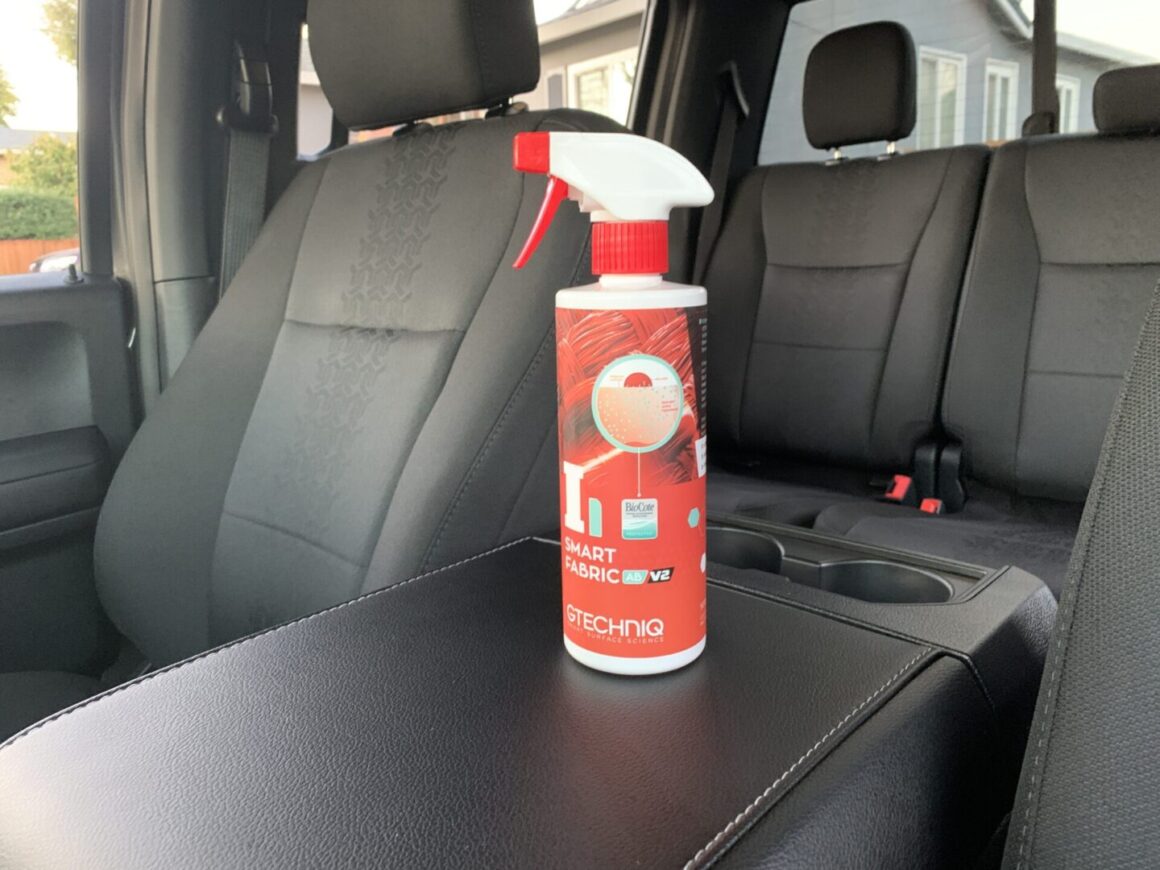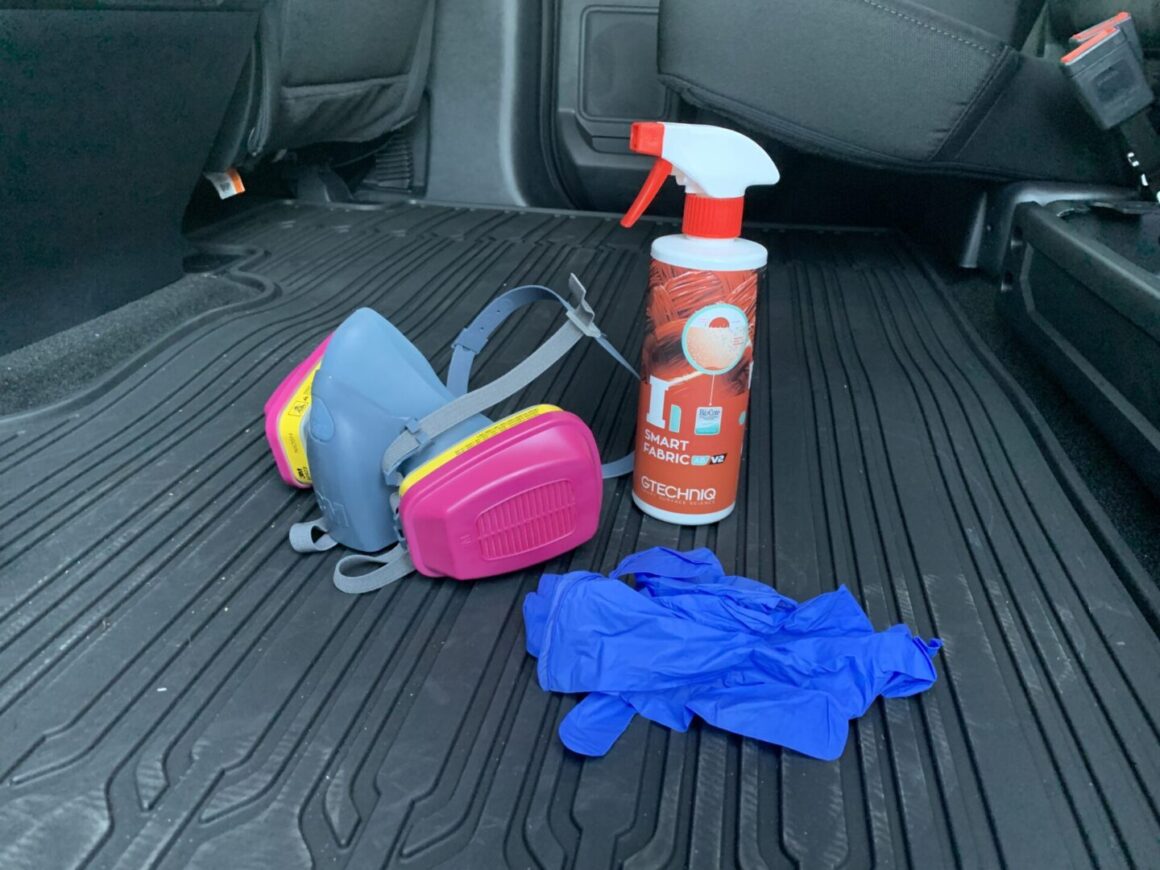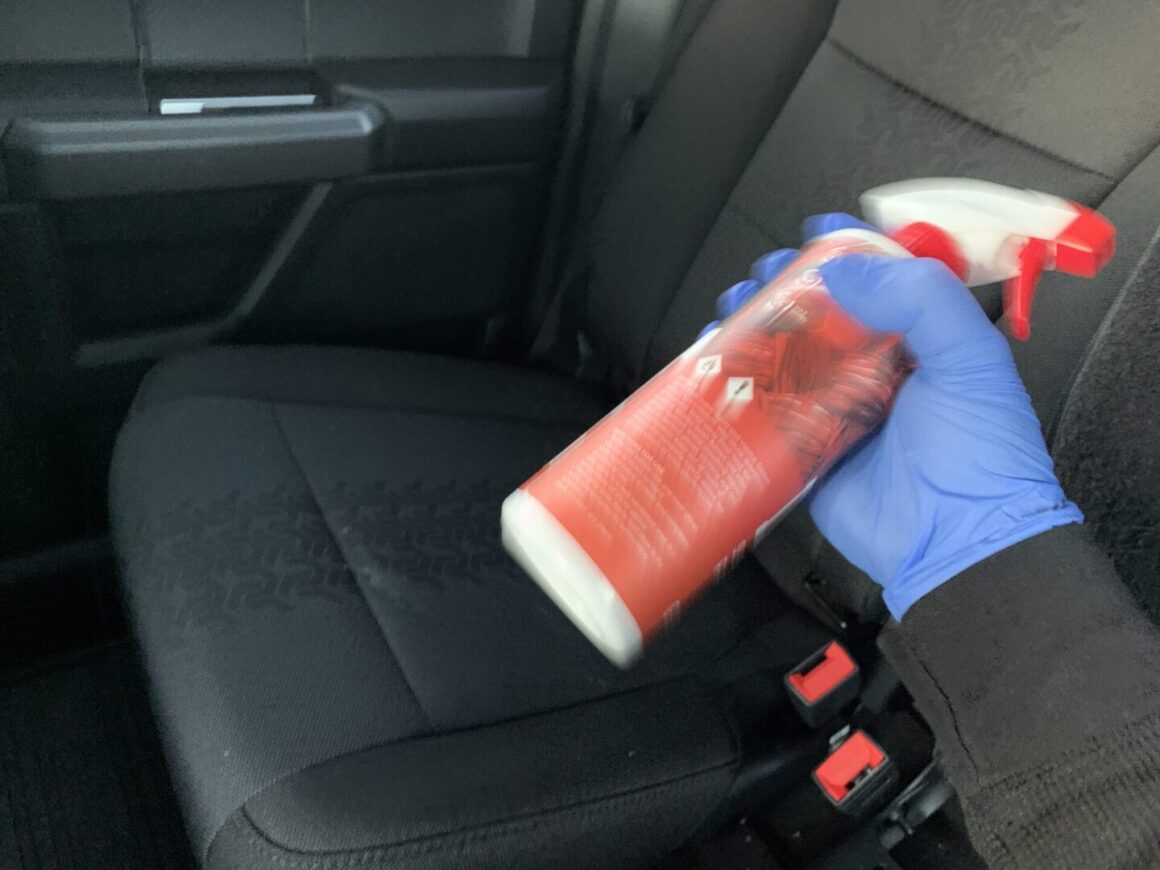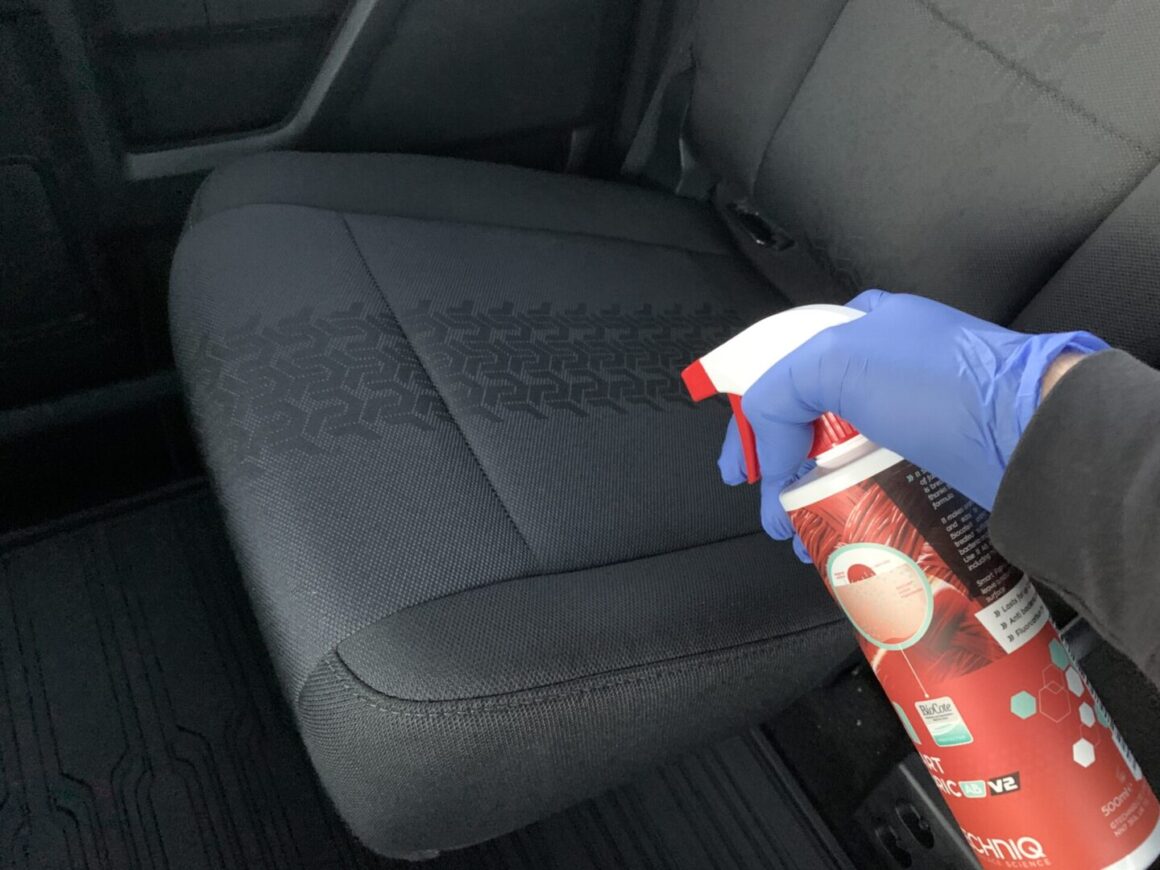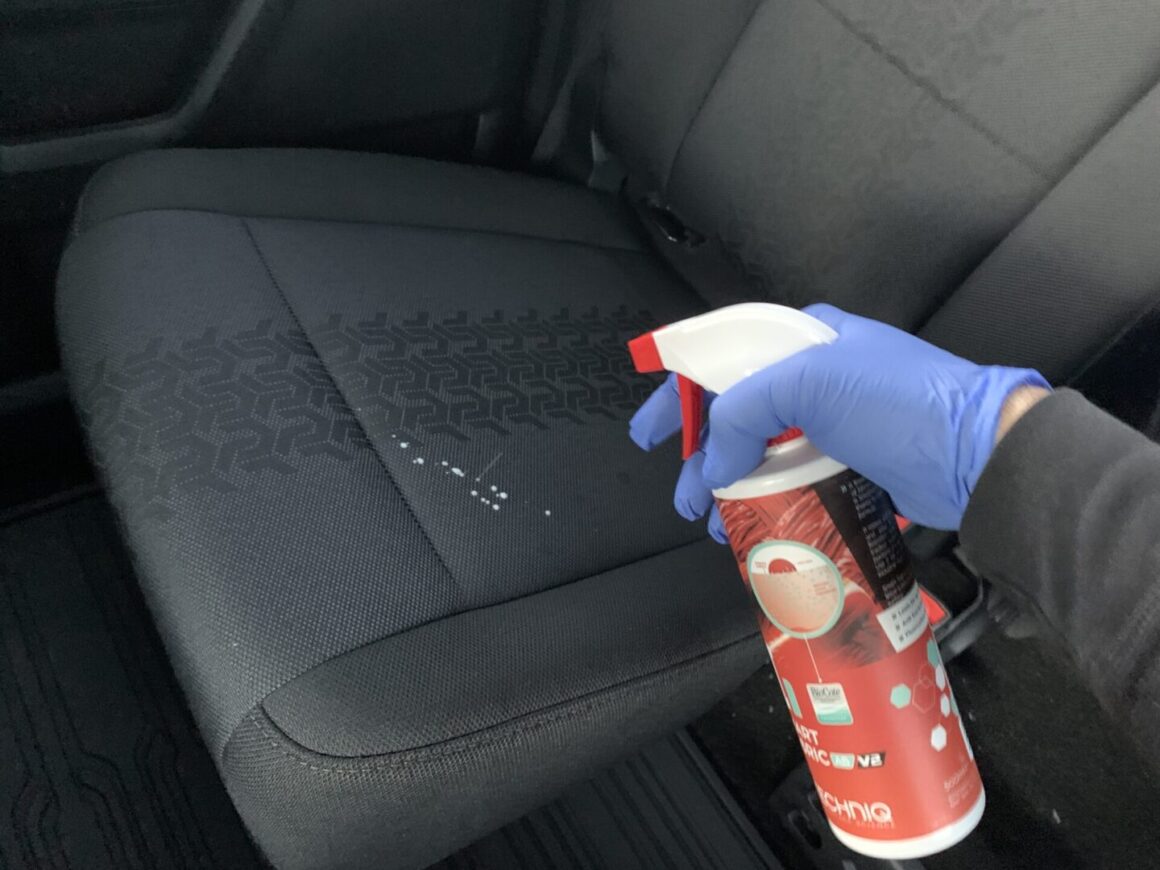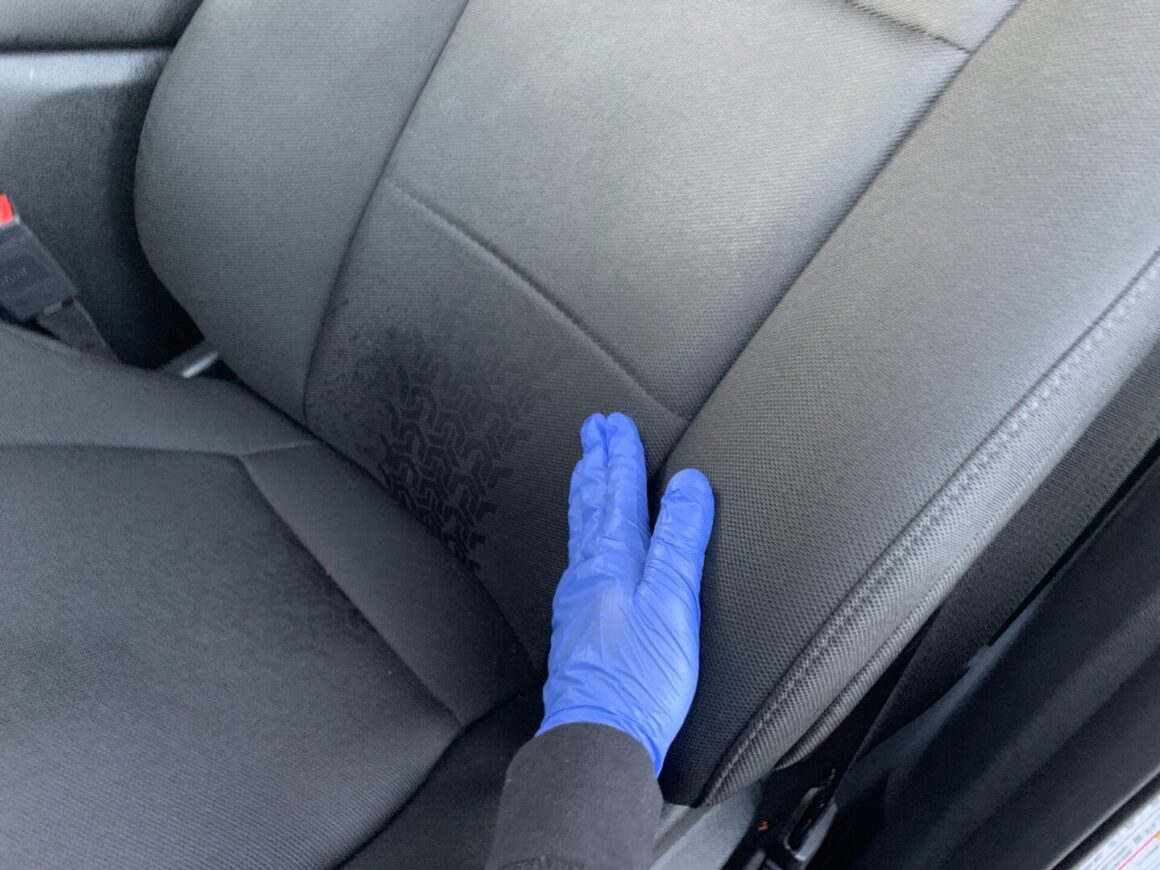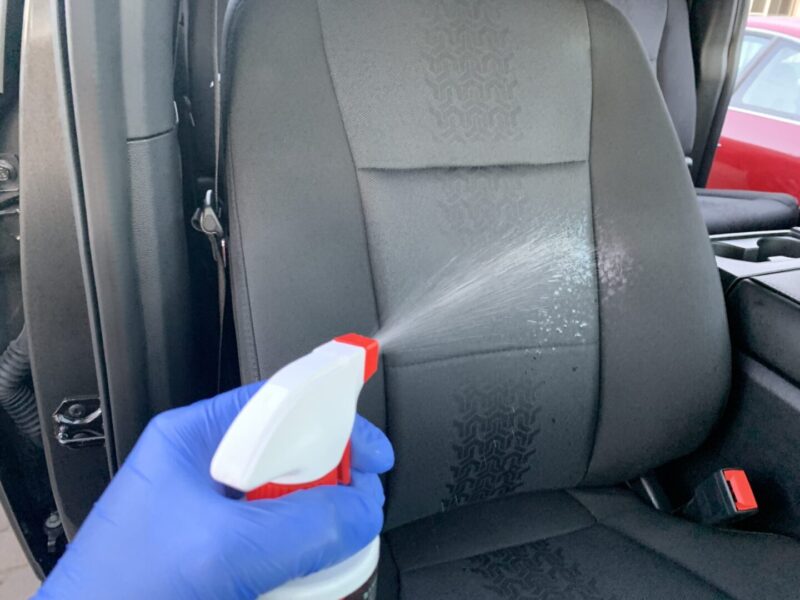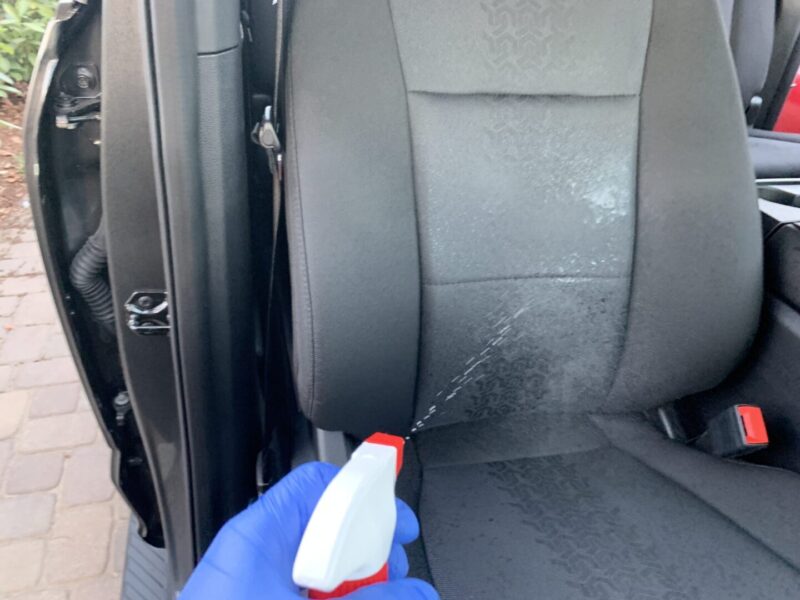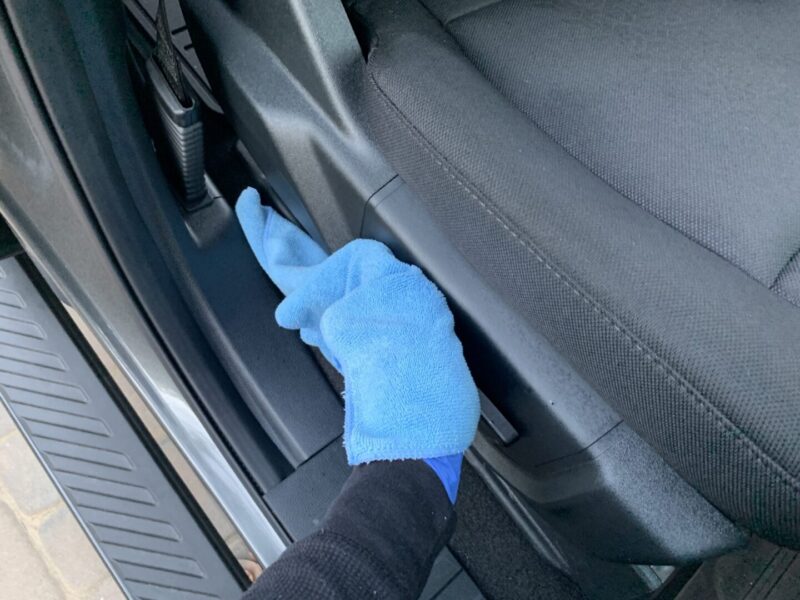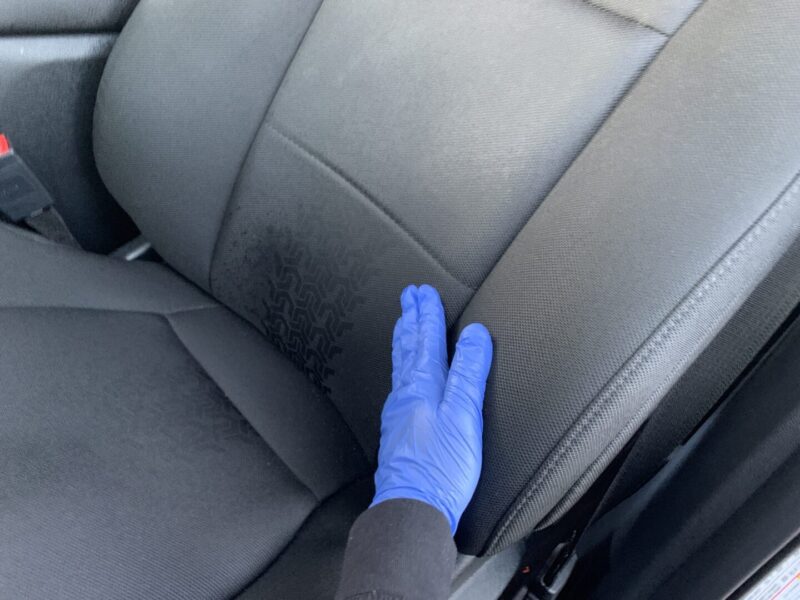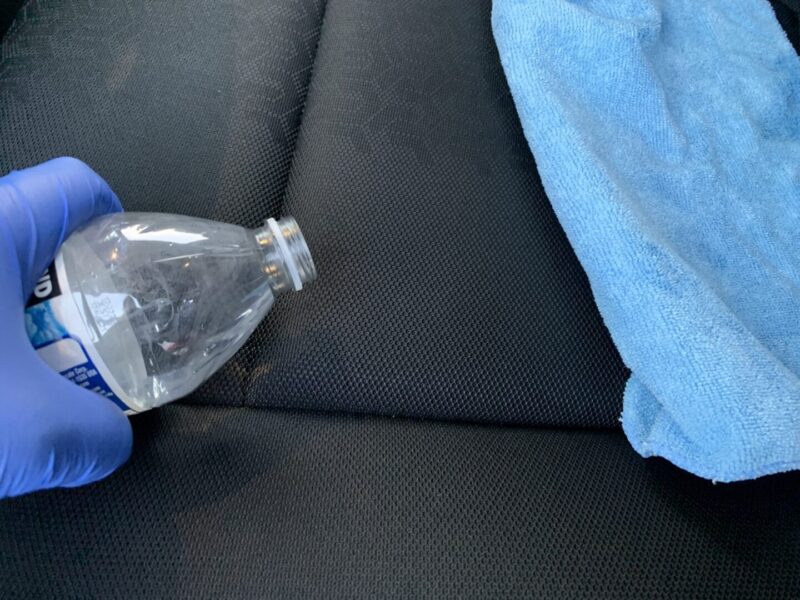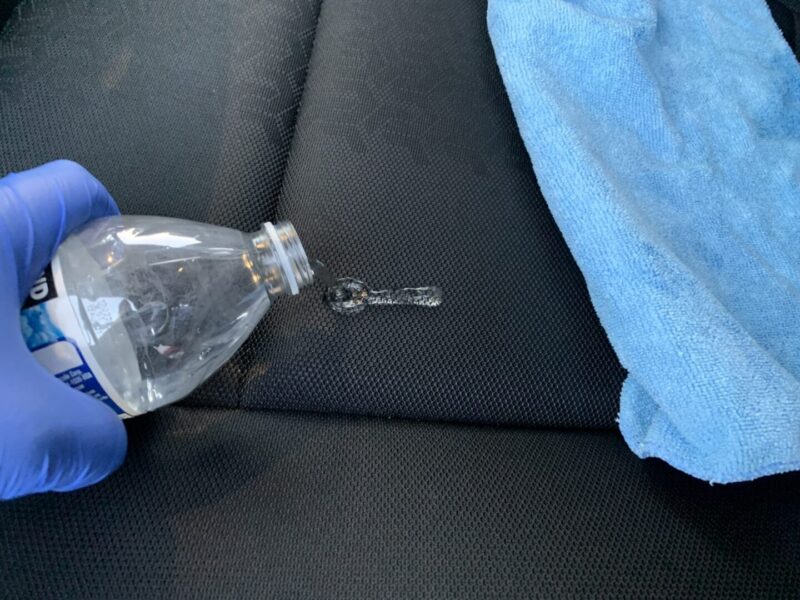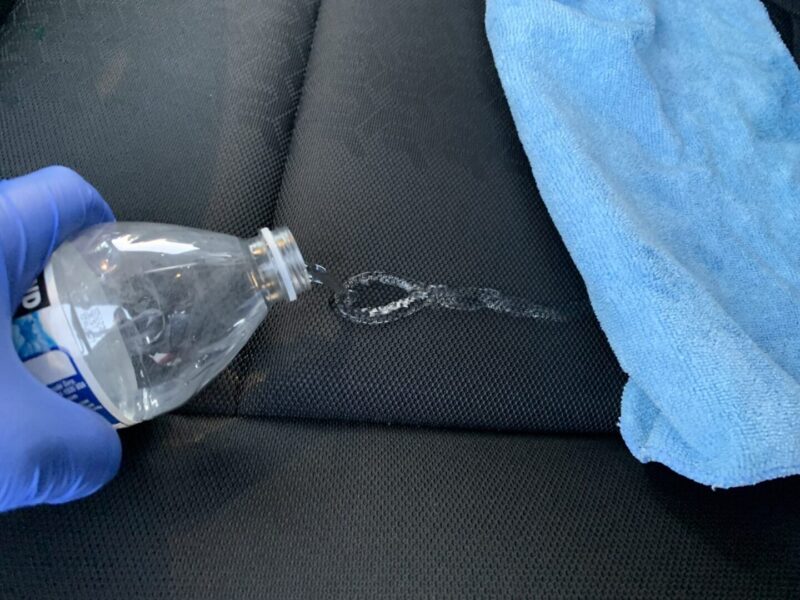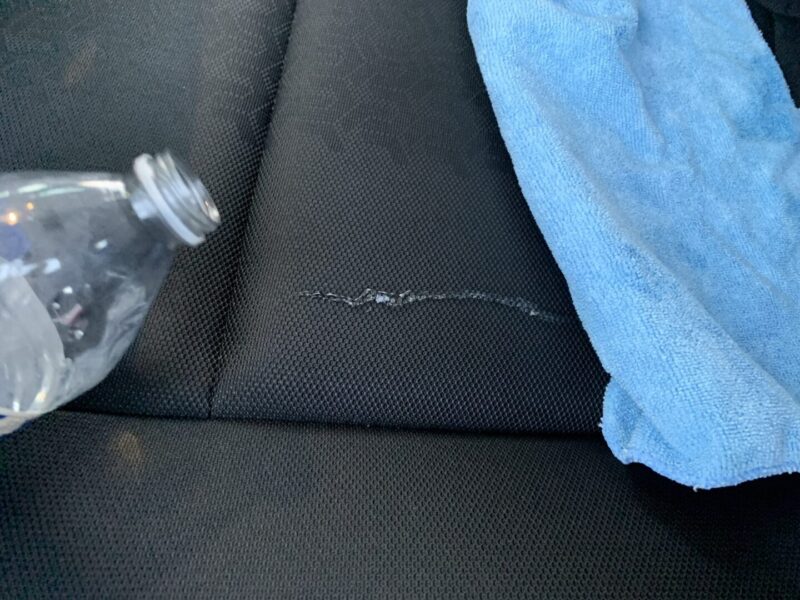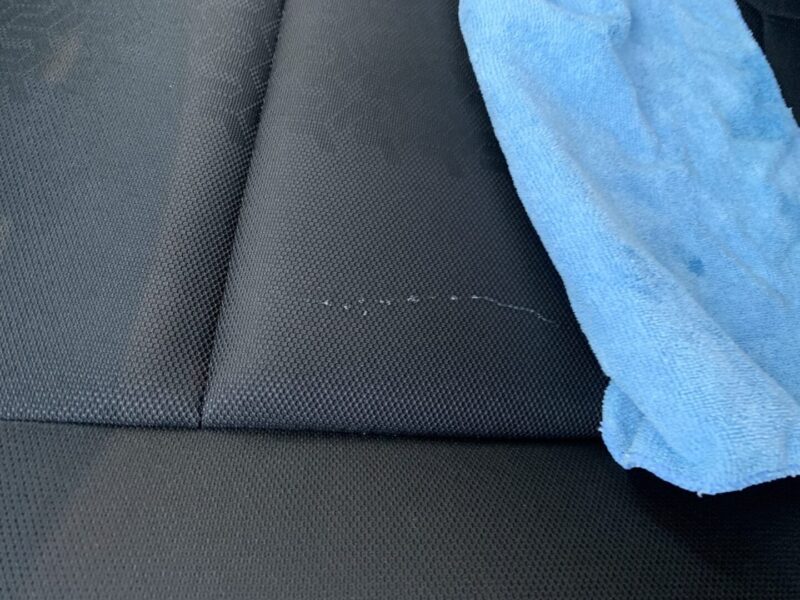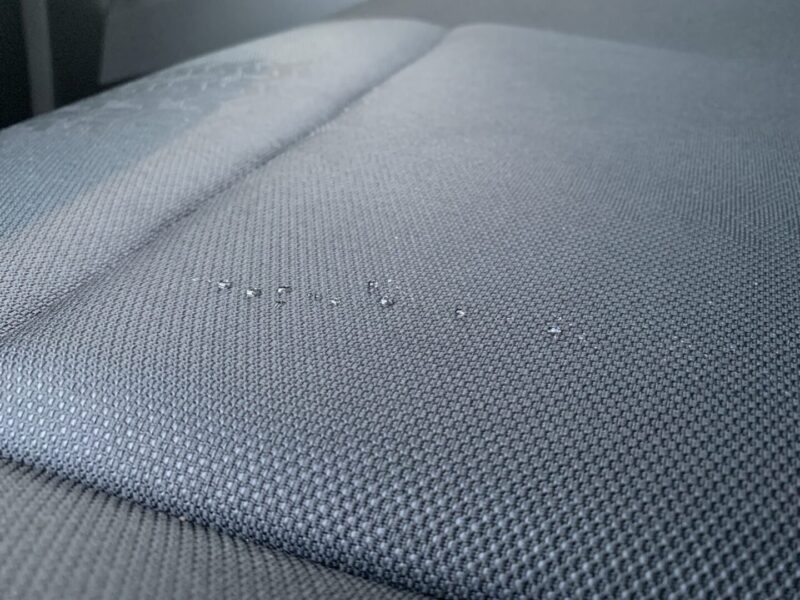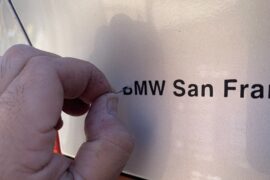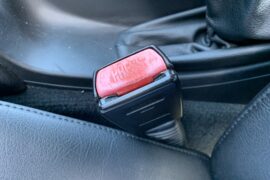When you make purchases through links on this site, The Track Ahead may earn an affiliate commission. Also, these posts are based off my own experiences. I am not responsible for any action you take as a result of reading this. Learn More
About Gtechniq Smart Fabric
After recently purchasing a new truck, I wanted to protect my investment both inside and out. For the inside, I purchased a fabric guard made by Gtechniq, called Smart Fabric. This fabric guard is a very effective coating that protects fibers of fabric material and making it waterproof, meanwhile maintaining the breathability and natural feel of fabric.
When compared to other fabric guards (such as 303 Fabric Guard, Scotchgard, etc.), this one has a higher effectiveness for repelling water and stains. If you’ve ever used Scotchgard, you’ll know that after you spray it onto a fabric surface, it adds a stiff texture to it. This is not desirable as you still want your fabric seating to be soft, as you’ll be sitting it in on a regular basis.
303 Fabric Guard is a pretty good contender as it does repel water quite well, however it doesn’t quite bead liquids as well as Gtechniq Smart Fabric, although it is still relatively effective. 303 Fabric Guard does costs considerably less than the Gtechniq formula, so keep that in consideration if trying to choose between the two.
After evaluating my options, I was going to apply the fabric guard on my new truck. So, I only wanted the best possible formula; out of these three choices for fabric protection, Gtechniq Smart Fabric was the clear winner although it did cost the most as well.
Tools & Materials
Gtechniq Smart Fabric
I used 500mL on my Ford F-150 front and rear seats. Because the recommended application is spraying directly onto the seats, I pretty much depleted the whole supply in the 500mL bottle for my front and rear seats alone. I did not apply it to the carpeted areas of my truck, and I did not need to apply it to the floor mats as they are all made of rubber.
Gtechniq – I1 Smart Fabric (500 mL)
All Purpose Cleaner (APC) or Optimum No-Rinse (ONR)
I’ll keep this on hand to wipe down any over-spray from the Gtechniq Smart Fabric. Since Gtechniq recommends spraying directly onto the fabric material, there can be a significant amount of overspray. The problem with this solution is that if it gets onto other interior materials, it needs to be immediately wiped off. Otherwise, it will stain and take more effort to remove in the future.
So having an APC or ONR available to wipe any overspray areas will prevent this stuff from staining your interior trim. Either product should be diluted for safe use for interior cleaning and used with a microfiber towel to wipe away the overspray.
ONR: Optimum No Rinse Wash & Shine
APC : Meguiar’s All-Purpose Cleaner, Optimum Power Clean, Mothers All-Purpose Cleaner
Microfiber Towels
Microfiber towels are always a must have for car detailing; you’ll use these along with the APC or ONR to wipe down any overspray areas on your interior trim.
Chemical Guys 16″ x 24″ Microfiber Towels (6-Pack)
Zwipes Microfiber Cloths (48-Pack)
AmazonBasics Microfiber Cloths (24-Pack)
Gloves
The Smart Fabric solution is quite potent, so its best not to have it in contact with your bare hands.
MedPride Powder-Free Nitrile Exam Gloves, Box/100: Small / Medium / Large
Respirator
Because Gtechniq Smart Fabric warns consumers that the product can “expose you to chemicals which is [are] known to the State of California to cause cancer and birth defects or other reproductive harm”, I would recommend using a P100 mask to protect yourself while installing this potent fabric guard. Perhaps if you are applying this stuff outside of your vehicle you could argue against the use of a respirator, but I would play it safe especially if you’re applying this inside the cabin.
Honeywell P100 Respirator: Disposable / Resusable
How to Apply Gtechniq Smart Fabric
First off, this is some potent stuff. You should be using this product in a well ventilated area. Since you’re spraying this fabric protectant on your seats, you should be doing so with all of the vehicle’s doors open. I caught a whiff of some of this after applying quite a bit and it was quite strong as it irritated my eyes and nose. Therefore, I recommend a respirator (even if the doors are fully open.)
You also need some nitrile gloves to not only protect your hands, but to also provide a method of spreading out the solution. More on that later.
Prior to applying Gtechniq Smart Fabric (or any other fabric guard for that matter), you should ensure that the fabric/cloth seats are completely clean. This means at a minimum, fully vacuumed and free of debris, but I would even go out to say that a full shampoo/cleaning would be best prior to applying the fabric guard if this is an older vehicle.
In my case, I am applying the Smart Fabric on a new car so I vacuumed it clean and did a surface wipe-down with some diluted Optimum No-Rinse. Finally, the seats should be completely dry prior to using Smart Fabric.
Shake the bottle prior to use and begin to liberally spray a layer over all seat fabric areas. Try to avoid over-spraying onto other non-fabric surfaces. However, I’ve found it practically impossible especially if you are spraying this inside of your vehicle.
If you’re concerned about overspray, you can always use something like a large bath towel to cover certain areas you don’t want any overspray on. Otherwise, keep that microfiber towel with APC or ONR on hand to quickly wipe away overspray.
After spraying a section of the seat, use your gloved hand to rub the product into the surface of the fabric. This helps to spread the product into the fibers of the fabric. Continue to check for overspray and use a microfiber with some diluted all purpose cleaner (or similar cleaner) to clean off any overspray. I’ve found that if you have this stuff left on plastic trim for any significant amount of time, it’s much more difficult to remove later down the road.
Continue to spray the other seats and work the material into the fabric. Again, work the product into the fabric with your gloved hand and then wipe off any overspray.
Gtechniq Smart Fabric doesn’t take long to dry, but it’s a good idea to let it fully cure for a few hours after application. I left the windows all open in my vehicle for several hours to allow it to completely cure. Once it’s done curing, you can test the hydrophobic properties of the product.
Here, I poured a bit of bottled water onto the seats and you can see the water doesn’t immediately absorb into the fabric seat. The water runs down the slope of the seat and into the blue towel. As for the remaining droplets of water, they stay suspended above the seat, making it easy to completely wipe away and clean.
I used Gtechniq Smart Fabric on the seats on my 2020 Ford F-150 as shown in the example here, but it can also be used on other fabric materials inside of the cabin such as carpet or fabric floor mats. It also would be perfect candidate for applying on the outside of a convertible top.
There was some overspray left on some interior parts of my vehicle as it’s really difficult to prevent overspray when you’re spraying the product inside of the cabin. Some of this overspray took some time to wipe away with a cleaner. I’d recommend that after you’ve gone through the process of spraying Gtechniq Smart Fabric, rubbing it in, and wiping away any overspray, to perform a final inspection and do a final wipe-down of all interior components to minimize the possibility of leftover overspray.


